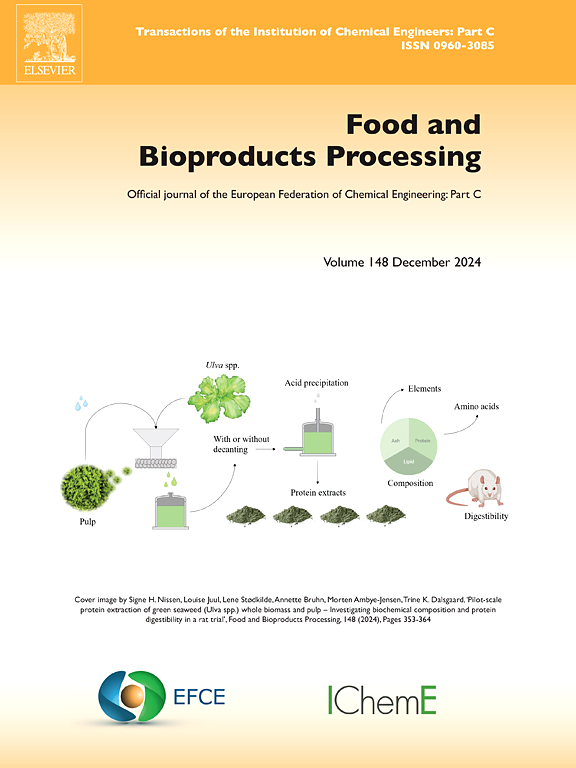An innovative approach in oat milk production: Ohmic heating
IF 3.5
2区 农林科学
Q2 BIOTECHNOLOGY & APPLIED MICROBIOLOGY
引用次数: 0
Abstract
This study aimed to produce oat-milk by using the ohmic heating (OH) system and to compare some quality properties of this milk with the milk produced by conventional methods. The solution containing oats was heated from 20 °C to 75 °C using 3 different voltage-gradients, and then oat-milk was obtained by applying a series of processes. It has been determined that as the voltage gradient increased during heating in oat milk production, the processing time shortens, and this time was 482 seconds in the conventional heating process. The effective electrical conductivity values increased as the temperature increased in the OH process during the production of oat-milk and these values vary between 0.13 and 0.41 S/m. Also, some quality characteristics of oat milk such as color and total phenolic content were better preserved in milk obtained by the OH process than conventional heating process. In addition, oat milk obtained by OH process had higher apparent viscosity at all temperatures.
燕麦奶生产的创新方法:欧姆加热
本研究旨在利用欧姆加热(OH)系统生产燕麦牛奶,并比较这种牛奶与传统方法生产的牛奶的一些质量特性。使用 3 种不同的电压梯度将含有燕麦的溶液从 20 °C 加热到 75 °C,然后通过一系列过程获得燕麦牛奶。结果表明,在燕麦奶生产过程中,随着加热过程中电压梯度的增加,处理时间也会缩短,在传统加热过程中,处理时间为 482 秒。在燕麦乳生产过程中,随着 OH 工艺温度的升高,有效电导率值也随之升高,这些值介于 0.13 和 0.41 S/m 之间。此外,与传统加热工艺相比,OH 工艺制得的燕麦奶更好地保留了燕麦奶的一些质量特性,如色泽和总酚含量。此外,用 OH 工艺制得的燕麦奶在所有温度下都具有较高的表观粘度。
本文章由计算机程序翻译,如有差异,请以英文原文为准。
求助全文
约1分钟内获得全文
求助全文
来源期刊

Food and Bioproducts Processing
工程技术-工程:化工
CiteScore
9.70
自引率
4.30%
发文量
115
审稿时长
24 days
期刊介绍:
Official Journal of the European Federation of Chemical Engineering:
Part C
FBP aims to be the principal international journal for publication of high quality, original papers in the branches of engineering and science dedicated to the safe processing of biological products. It is the only journal to exploit the synergy between biotechnology, bioprocessing and food engineering.
Papers showing how research results can be used in engineering design, and accounts of experimental or theoretical research work bringing new perspectives to established principles, highlighting unsolved problems or indicating directions for future research, are particularly welcome. Contributions that deal with new developments in equipment or processes and that can be given quantitative expression are encouraged. The journal is especially interested in papers that extend the boundaries of food and bioproducts processing.
The journal has a strong emphasis on the interface between engineering and food or bioproducts. Papers that are not likely to be published are those:
• Primarily concerned with food formulation
• That use experimental design techniques to obtain response surfaces but gain little insight from them
• That are empirical and ignore established mechanistic models, e.g., empirical drying curves
• That are primarily concerned about sensory evaluation and colour
• Concern the extraction, encapsulation and/or antioxidant activity of a specific biological material without providing insight that could be applied to a similar but different material,
• Containing only chemical analyses of biological materials.
 求助内容:
求助内容: 应助结果提醒方式:
应助结果提醒方式:


